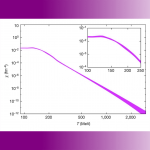Two big mysteries of physics can be explained by the hypothetic particle, mass of which has been predicted much more precisely now than previosly. Researchers of MTA Lendület Groups, ELTE and University of Wuppertal were involved in this work. The results are published in the Nature.
The hypothetic particle called axion has not been experimentally found by now. Its existence could explain two big mysteries of physics: the nature of dark matter and the unexplained symmetry of strong interaction which holds the quarks together in a nucleon.
The researchers followed the progress of the matter involved in strong interaction in the early Universe by means of computer simulation. Thus they managed to determine how many axions might have born during the evolution of the Universe. Assuming that dark matter is made of mainly axions, the mass of axion has been predicted. This is of primary importance when new experiments are planned to observe this particle.
Two Lendület Groups, the MTA-ELTE Lendület Lattice Gauge Theory Research Group and MTA Atomki Lendület Lattice Quantum Chromodynamics Group had important contribution to this study.
More: MTA news (in Hungarian)
Contact: KOVÁCS Tamás György
Nature 539, 69–71 (03 November 2016)
Calculation of the axion mass based on high-temperature lattice quantum chromodynamics
 Magyar
Magyar

